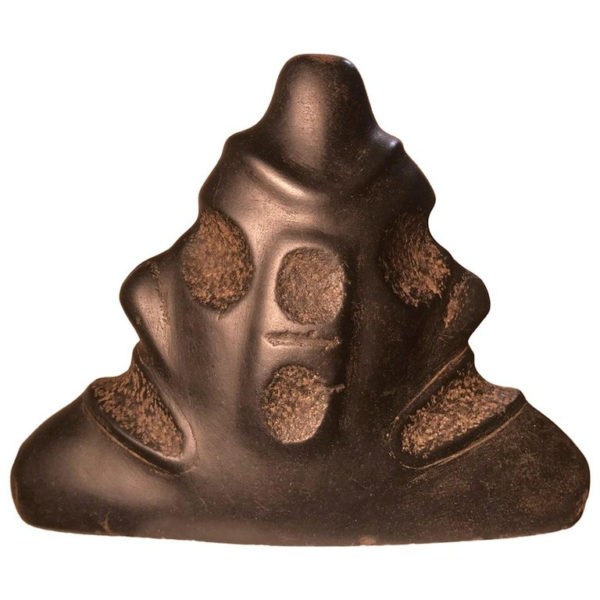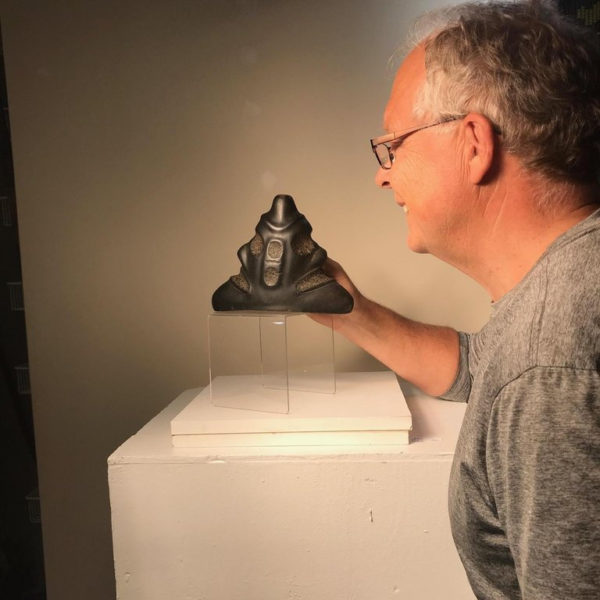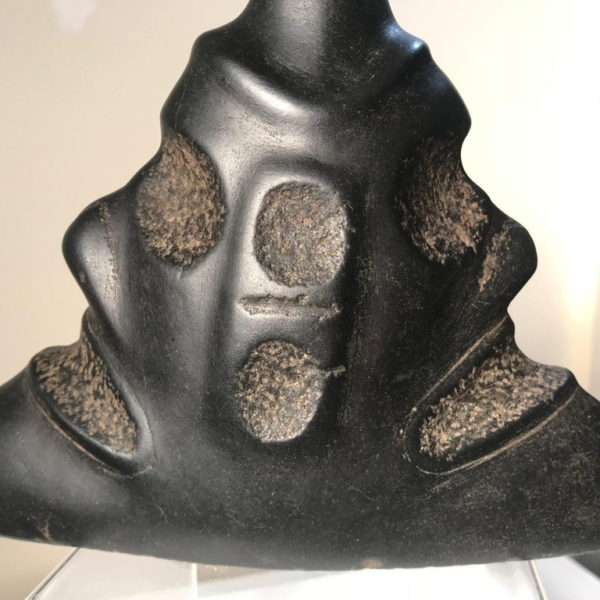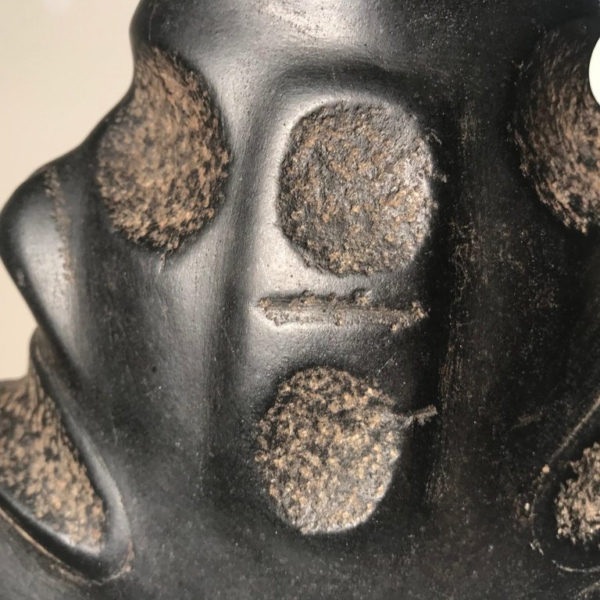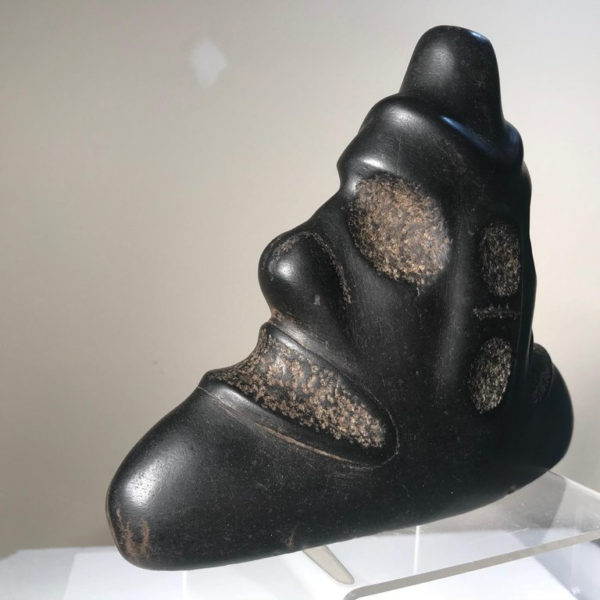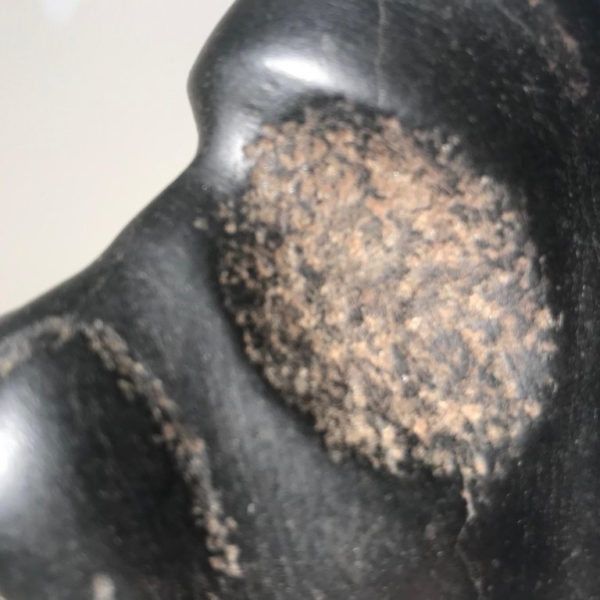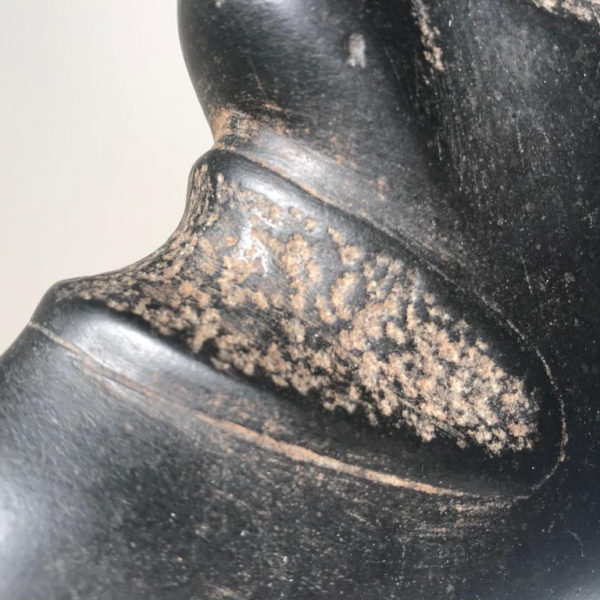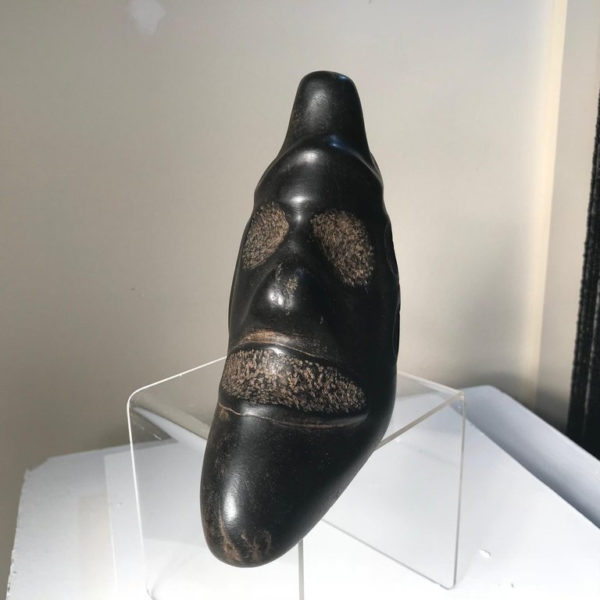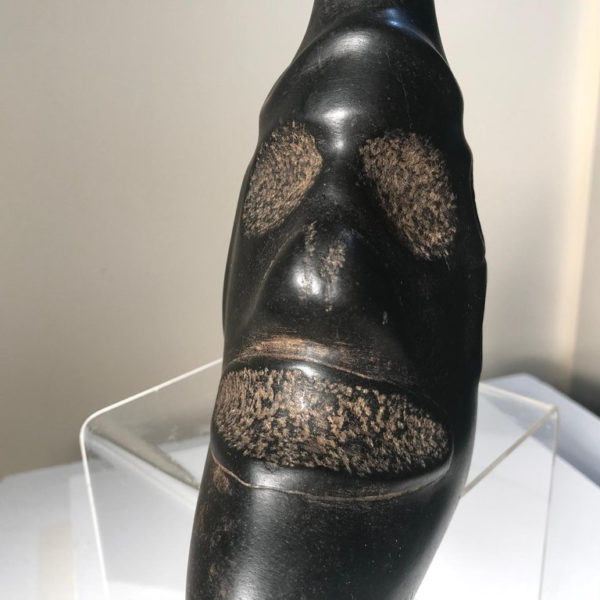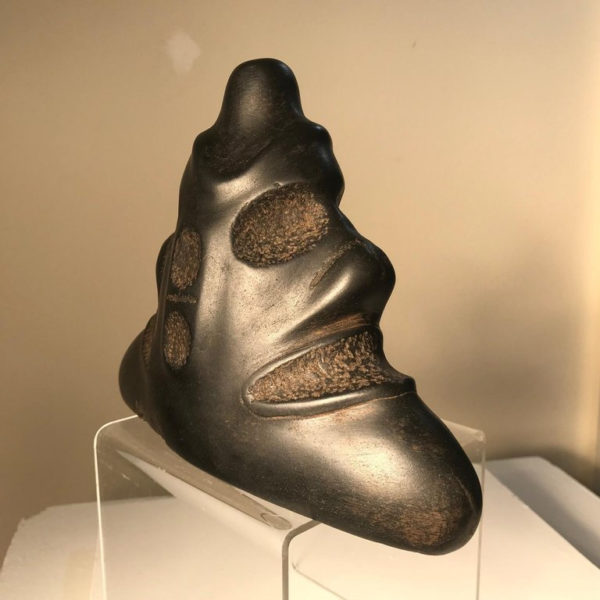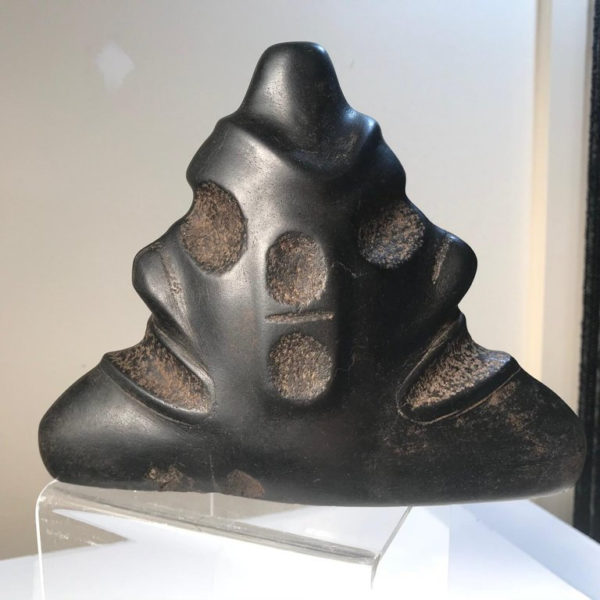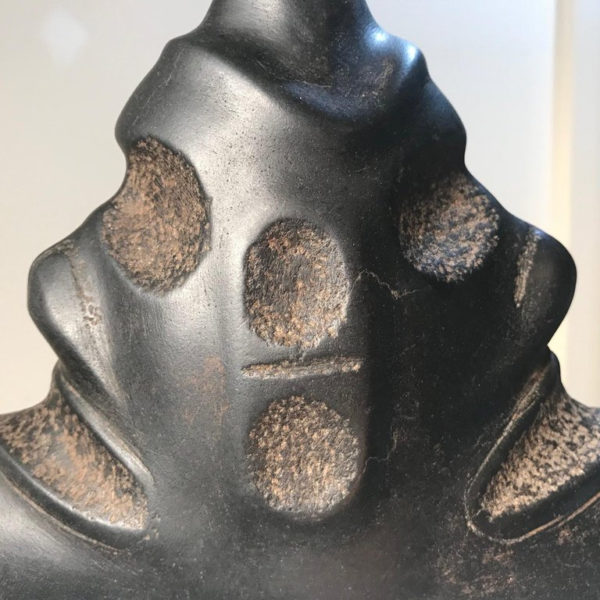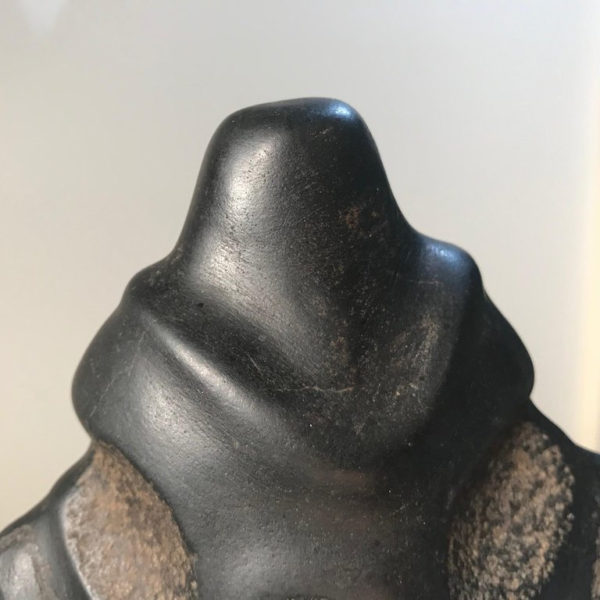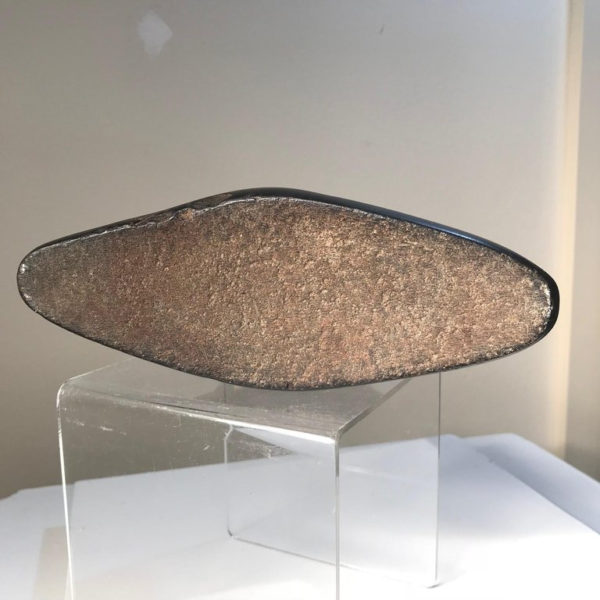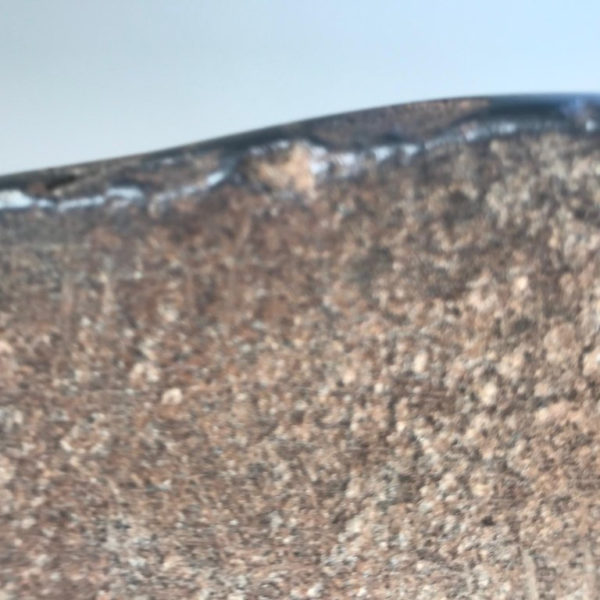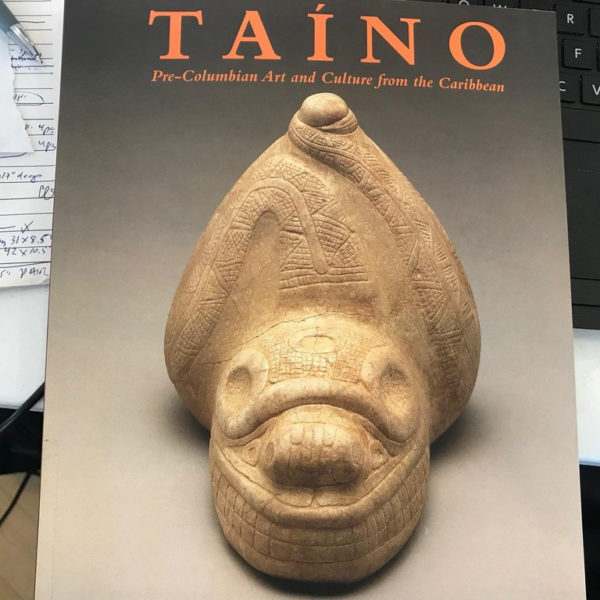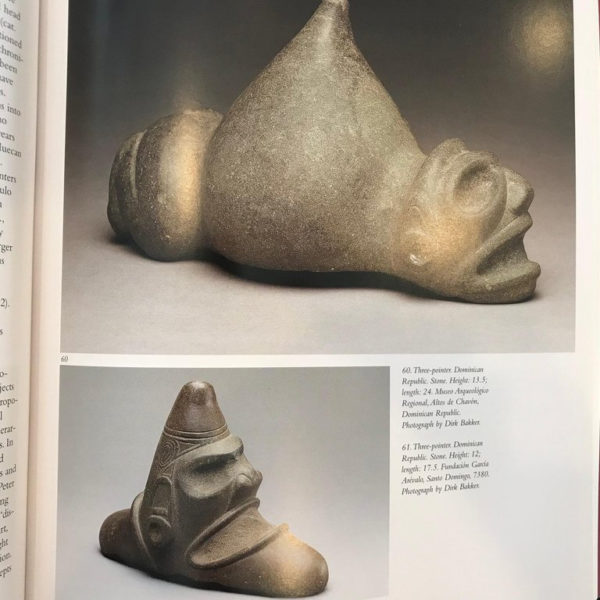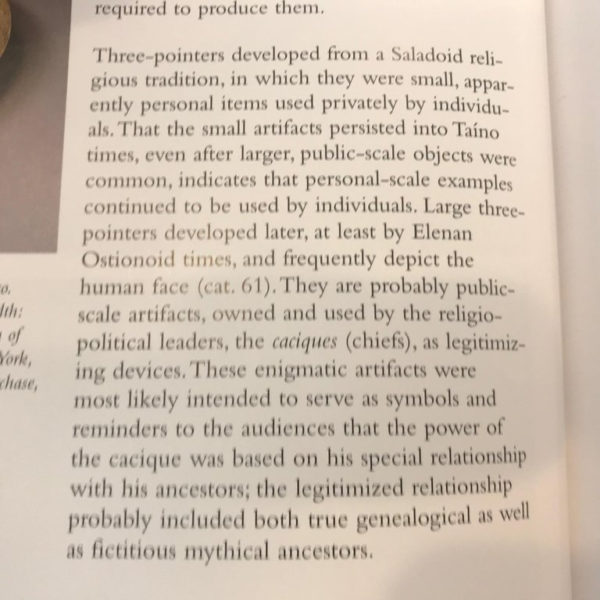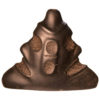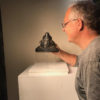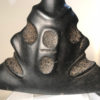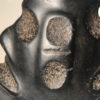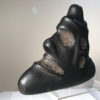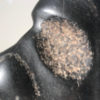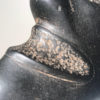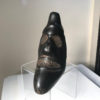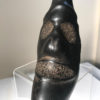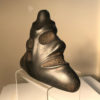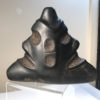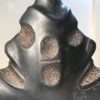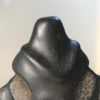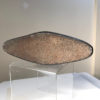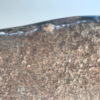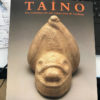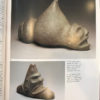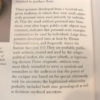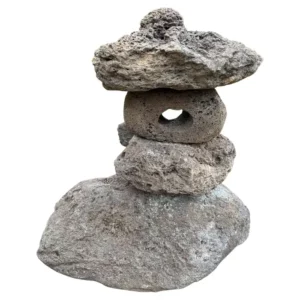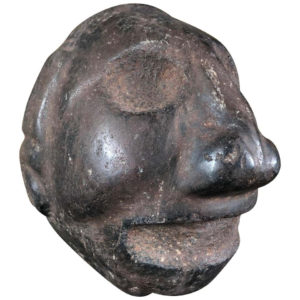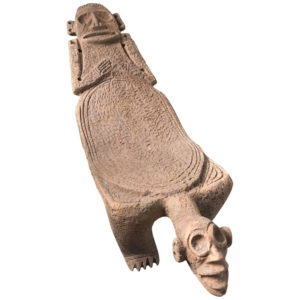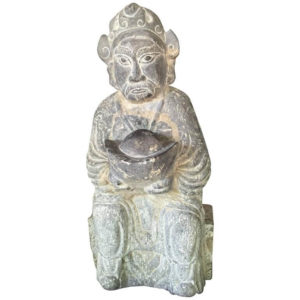America’s First “Spirit God” Double Headed Ancestor 500 Years Old
$5,000.00
Sold Out
Lifetime GuaranteeEmail to a friend
Pre-Columbian, Hispaniola, Arawak Peoples, Taino Native Indians, 1000-1500 CE.
This is a fine and important ancestor sculpture from the Arawak Peoples of the Greater Antilles Islands. It is as nice as one will ever find.
Sometimes described as a -three-pointer stone or – trigonolitos- this work of art belongs to a broader category of Taino art called -zemis-. This term refers to the physical incarnation of a Taino god, spirit or ancestor. While the precise function of such objects remain somewhat a mystery- they continue to impress us with their bold abstract form and magical associations.
Rare double headed form
This remarkable sculpture of a zemi figure is carved in a seldom seen double headed form from a dark dense stone. This quintessential and rare example has a large conically formed central raised point, the dual Zemi figure faces are meticulously hand pecked and incised with round deep-socketed eyes, prominent nasal cavities, wide open mouths, and double-lobed ears. This specimen was then purposely polished. Some scholarly ideas think that zemis with their prominent pointed shapes relate to fertility myths.
A carving of this complexity, quality and size must have belonged to a chieftain or ranking member of the royal household. Although Taino left no written documents, Spanish settlers did record native practices and one account refers to special structures in which chieftains stored their trove of zemi carvings. The Taino believed in existence of afterlife and Shamanic ability to communicate with the dead. This sculpture may well have been present and on display in such a ceremony or perhaps a focus of ancestor worship. This remarkably evocative work allows us to peak into ancient splendors of Taino civilization.
Dimensions: 8.5 inches wide and 6.5 inches high
Hand-carved. Venerated. An important and scarce work of art from America’s Caribbean islands.
Provenance: Old Florida collection.
Taino History:
The Taino flourished from 1200-1500.
When Columbus arrived in America, the first people he encountered were the Taino People- inhabitants of the islands of the northern Caribbean Sea, known as Hispaniola. They were Arawakan-speaking people who at the time of Christopher Columbus’s exploration inhabited Cuba, Jamaica, Hispaniola (Haiti and the Dominican Republic), Puerto Rico, and the Virgin Islands. Once the most numerous indigenous people of the Caribbean, the Taino may have numbered several million at the time of the Spanish conquest in the late 15th century.
Their highly developed belief system focused on zemi ancestor or god worship. A zemi was the physical manifestation of a god, spirit or ancestor. The chieftain -caciques- encouraged ancestor worship and were often deified after death. The religious leaders or shamans were thought to be able to communicate with the souls of the dead when intoxicated by the hallucinogenic cohoba. A preoccupation with death is evident in many Taino art-forms and partly explains the prevalence of zoomorphic images. Bats, owls and frogs were all popular motifs and were regarded as harbingers of life after death. The Taino believed that the dead could be reborn in animal form and some believe animals were their earliest ancestors in Taino creation myth. Hence we find their zoomorphic sculptures as combinations of human and animal forms particularly provocative and great conversational art. The creator god was known as Yúcahu Maórocoti, encouraging growth of staple foods, like cassava. The goddess was Attabeira, who regulated and dominated over water, rivers, and seas.
Their contribution to the Spanish includes Indian corn, tobacco, rubber balls to unique art and artifacts, plus a new vocabulary. Importantly, the Taino lasting effects on Western civilization, though through brief contact, was an important and lasting one.
In their seminal book TAINO, authors
Lifetime guarantee of authenticity: All of our works of art come with our Lifetime Authenticity Guarantee.
Our gallery has been dealing in authentic Native American, Japanese, Chinese, and fine Asian art, garden ornaments, lanterns and water basins for 25 years. Our president personally travels across America, Japan and Europe each year to meet his network partners who assist him in finding best examples. He personally inspects each antique work of art to ensure its old age, authenticity and quality condition.
We have been dealing in authentic Japanese and Chinese Fine art, antiquities, garden ornaments, lanterns and water basins for 25 years. The president personally travels to Japan and China each year to meet his network partners who assist him in finding best examples. He personally inspects each antique work of art to ensure its old age, authenticity and quality condition. After accumulating a group, they are imported to Vermont and Maine in large containers. This method keeps shipping costs low and enables us to offer them to you at reasonable prices. We carefully pack and ship to clients all-over the USA and at reasonable shipping costs.
Item Details
- Dimensions: N/A
Related Art
(802) 279-7601
(802) 279-7601
(802) 279-7601

